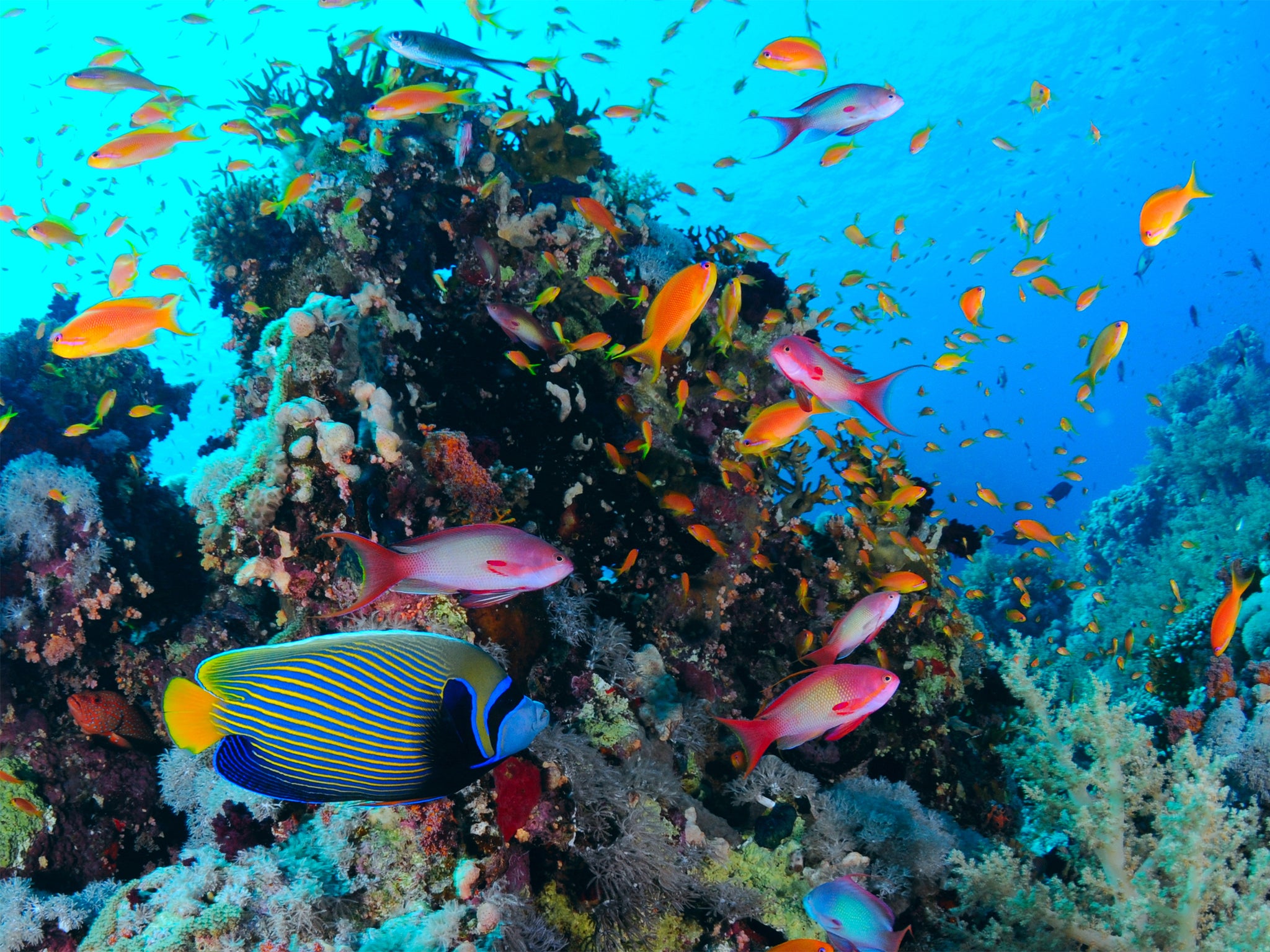Coral reef growth ‘already failing to keep pace with sea level rise’, study says
Reef growth and future sea levels are 'increasingly divergent depending on which awful scenario you look at'

Coral reefs, already under existential threat from rising water temperatures, face further risks as projected sea level rises will outpace the speed they are able to grow, new research suggests.
Current growth rates in the tropical western Atlantic and Indian Ocean have so far kept up with modern global sea level rises – 6cm during the 19th Century and 19cm during the 20th century.
But projections for sea level rises by the end of the 21st Century will outpace coral growth, the study says.
Reef growth is already severely hampered by combinations of coral disease, deteriorating water quality and fishing pressure, along with severe impacts from “coral bleaching” caused by climate change.
Lead author, Professor Chris Perry, of the University of Exeter told The Independent: “One of the most alarming things about the study is the difference between reef growth and future projections being increasingly divergent depending on which awful scenario you look at.
“Even if you compare the rates of growth with the rates of sea level rise we’ve seen over the last 20 years then many reefs are already growing at rates that are below those levels of sea level rise."
About half of the reefs came into this bracket, "so there’s already a disconnect”, Prof Perry added.
The research team used local reef growth projections in collaboration with sea level predictions based on the most likely future climate scenarios adopted by the Intergovernmental Panel on Climate Change (IPCC). These provide sea level predictions based on atmospheric greenhouse gas concentrations.”
The IPCC’s models describe four possible trajectories for our planet. These are known as RCPs (Representative Concentration Pathways).
The most optimistic pathway is RCP2.6. This is based on humans’ annual greenhouse gas emissions peaking between 2010 and 2020. In this scenario the planet will see global average temperature rises of up to 1.7C and sea level rises of up to 55cm by the year 2100.
Next, RCP 4.5 based on a 2040 emissions peak, would see temperature rises of up to 2.6C and sea level rises of up to 63cm.
RCP 6.0 is based on emissions peaking in 2080. This scenario forecasts average global temperature rises of up to 3.1C and sea level rise of up to 63cm.
The worst case scenario is RCP 8.5. This would see emissions continue to rise beyond the end of the century. Average global temperatures could rise by up to 4.8C, and sea levels could rise by a maximum of 82cm.
“Even under modest climate change prediction scenarios (RCP4.5) only about 3 per cent of Indian Ocean reefs will be able to track local sea-level rise projections without sustained ecological recovery, whilst under continued high emission scenarios (RCP8.5) most reefs will experience water depth increases in excess of half a metre,” said co-author Dr Aimée Slangen of NIOZ, Royal Netherlands Institute for Sea Research.
The research immediately follows publication of another paper which predicts flood damage from storms will double across the world as coral reefs decline, leading to colossal economic impacts.
Reefs serve as natural breakwaters that reduce flooding by dampening waves and breaking them early.
Prof Perry and his team’s research, published by the journal Nature, also sought to understand the impact coral decline could have on species dependent on the coral.
“The driver for the research was to try to understand what the implications of coral decline and in particular the loss of some of the really important reef building species for the different physical functions which reefs provide,” Prof Perry said. “Those include the ability of the reefs to maintain their structures, and all the benefits which come from that in terms of habitat for fish and other species, as well as coastal protection functions.
“Low energy lagoons behind reef crests can harbour sea grass beds and habitats that are really important for a lot of juvenile species… and as they hydrodynamics behind the reefs change, then they will affect those near-shore or lagoon species.”
He said that measurements for coral growth are not necessarily reflective of the speed of overall reef growth.
“There is a difference between how fast corals grow and how fast the whole structure of the reef grows itself – the latter is the cumulative effect of corals growing, but also being broken down. Corals can grow at far faster rates than the overall reef grows. We looked at local rates of reef growth and compared it with the most appropriate rates of sea level rise projection, rather than making a simple comparison against the global average.
“In addition, the coral growth projections we’ve put in this paper are the maximum potential rates of accretion – the most optimistic scenario – as we can’t sensibly factor in the amount of material that gets periodically removed by storms and waves.”
Rates of coral decline have risen significantly since 2016, when mass bleaching events have occurred across the planet.
Prof Perry said action needs to happen at both a global and local level to help tackle the issue.
“The CO2 emissions issue is massively important because it is one of the drivers of sea level rise but also leads to and exacerbates the frequency of coral bleaching events,” he said.
“At a local level it’s about more effective management – that is about trying to protect or reverse the declines in coral cover in some regions. This may be through more effective management – controlling or limiting fishing pressure or, for example in the Caribbean basin, addressing water quality decline which is seen as a big driver of reef degradation.”
Join our commenting forum
Join thought-provoking conversations, follow other Independent readers and see their replies
0Comments